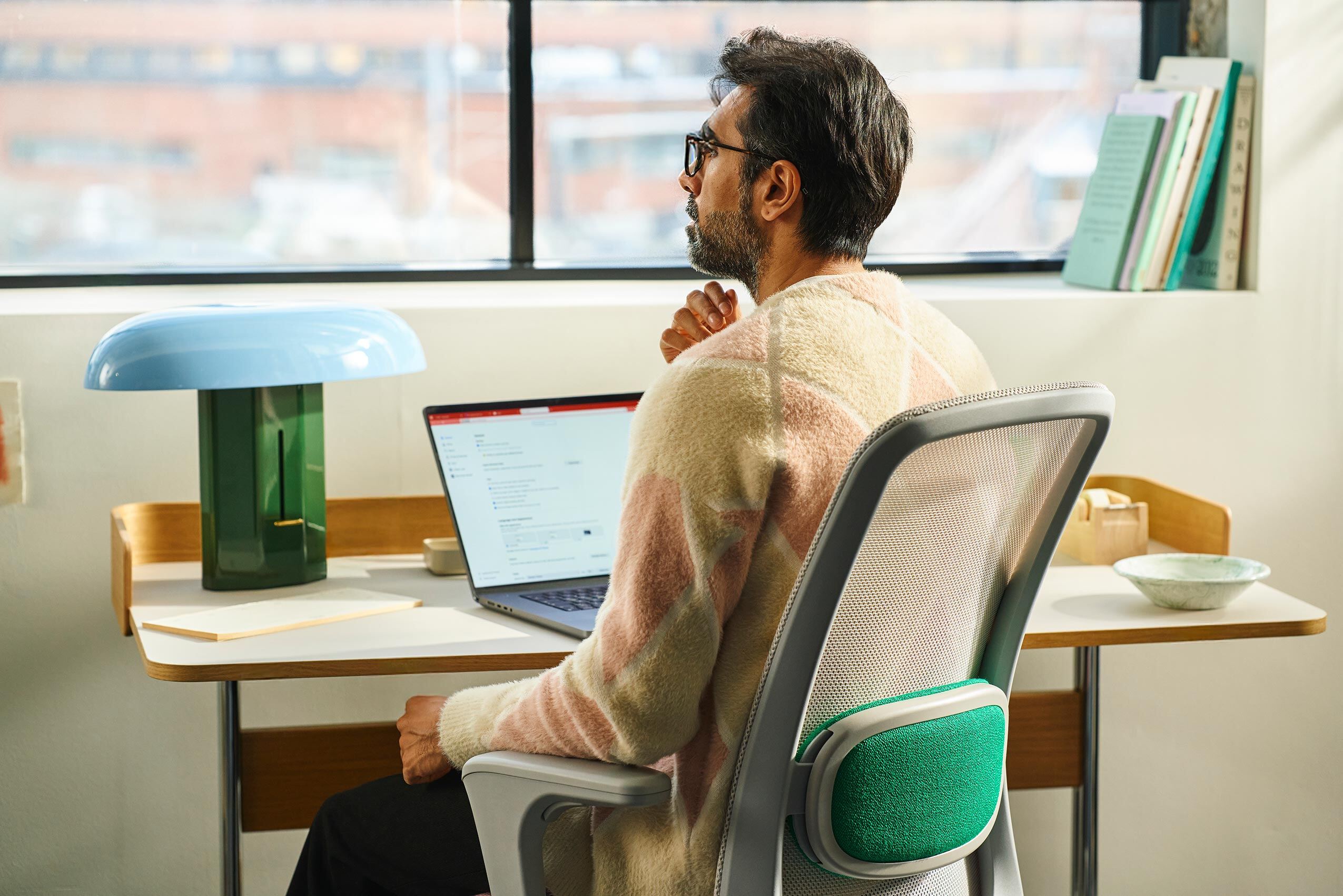
Workplace well-being: designing a healthier and more productive environment
An essential guide for those looking to improve or maintain high levels of well-being within their workspace through thoughtful design, ergonomics, and environmental factors.
- Wellbeing
- HÅG
- RH
- OFFECCT
- Giroflex
- Profim

What is workplace well-being?
Workplace well-being refers to the overall physical, mental, and emotional health of employees, influenced by the design and culture of their work environment. A well-designed workspace not only enhances comfort and productivity but also fosters creativity, reduces stress, and improves job satisfaction.
Why workplace well-being matters
Companies investing in workplace well-being see higher retention rates, reduced healthcare costs, and a stronger workplace culture.
Studies show that a well-optimised work environment can:
- Increase productivity by up to nearly 20%.
- Reduce absenteeism and work-related stress.
- Improve employee engagement and job satisfaction.
- Enhance creativity by promoting a positive atmosphere.
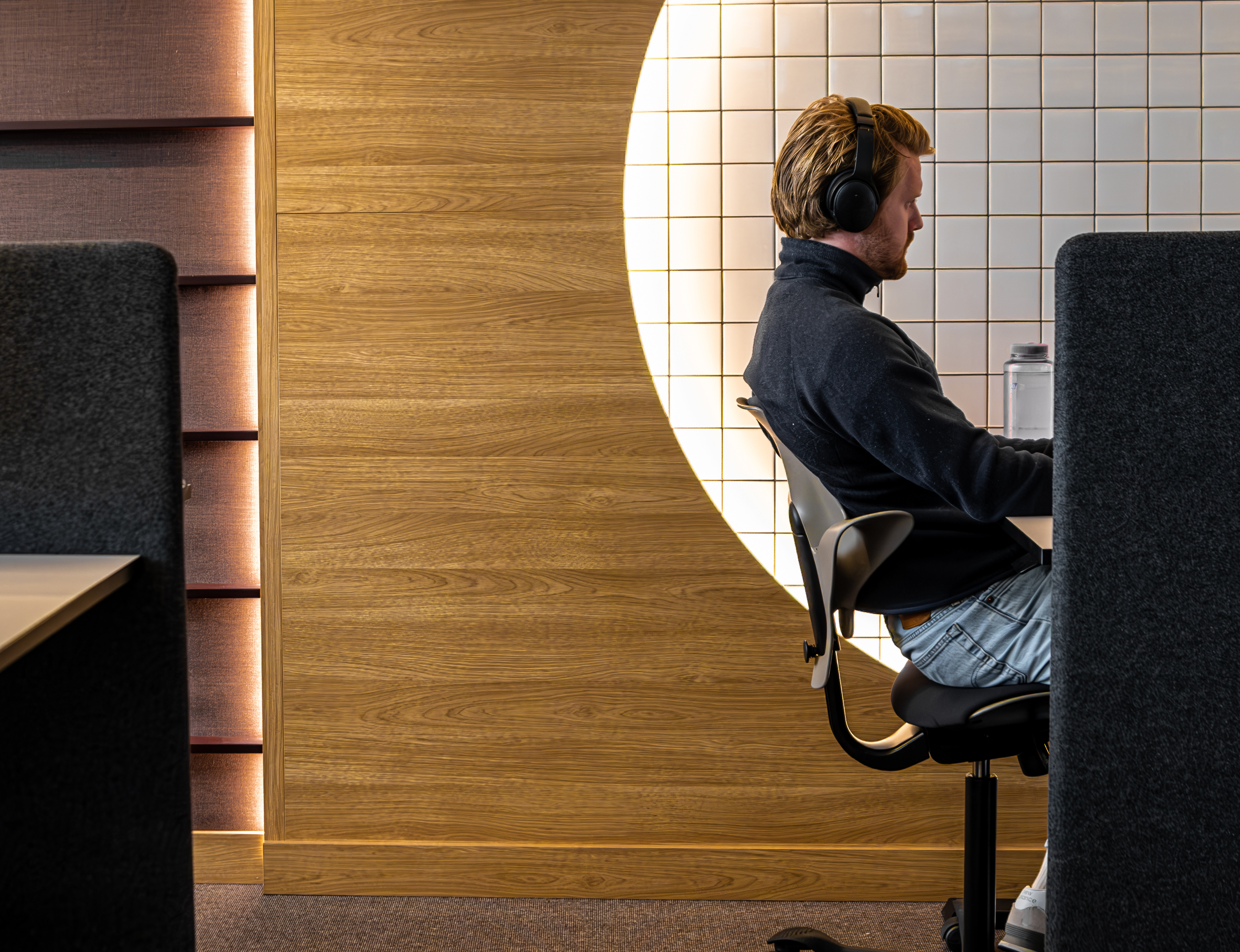
The key elements of workplace Well-being
Ergonomics: Supporting physical health
A core component of workplace wellbeing is ergonomic seating, which goes beyond comfort to actively enhance physical health and prevent long-term issues. Research has shown that poor posture and inadequate seating can lead to musculoskeletal disorders (MSDs), a leading cause of workplace absenteeism.
Key elements of ergonomic seating include:
- Adjustable backrests and lumbar support to align the spine and reduce strain.
- Sit-stand desks that promote movement and flexibility throughout the workday.
- Customisable tilt, armrests, and seat height to accommodate different body types and postures
💡 Tip: Providing ergonomic furniture helps prevent discomfort, reduces work-related injuries, and boosts focus and productivity by ensuring employees are physically supported throughout the day.
You can read more about how ergonomics impacts workplace well-being here.
![RH_Logic_220_Silver_people_4[ppt]-(1)](https://focus.flokk.com/hubfs/RH_Logic_220_Silver_people_4%5Bppt%5D-(1).jpg)
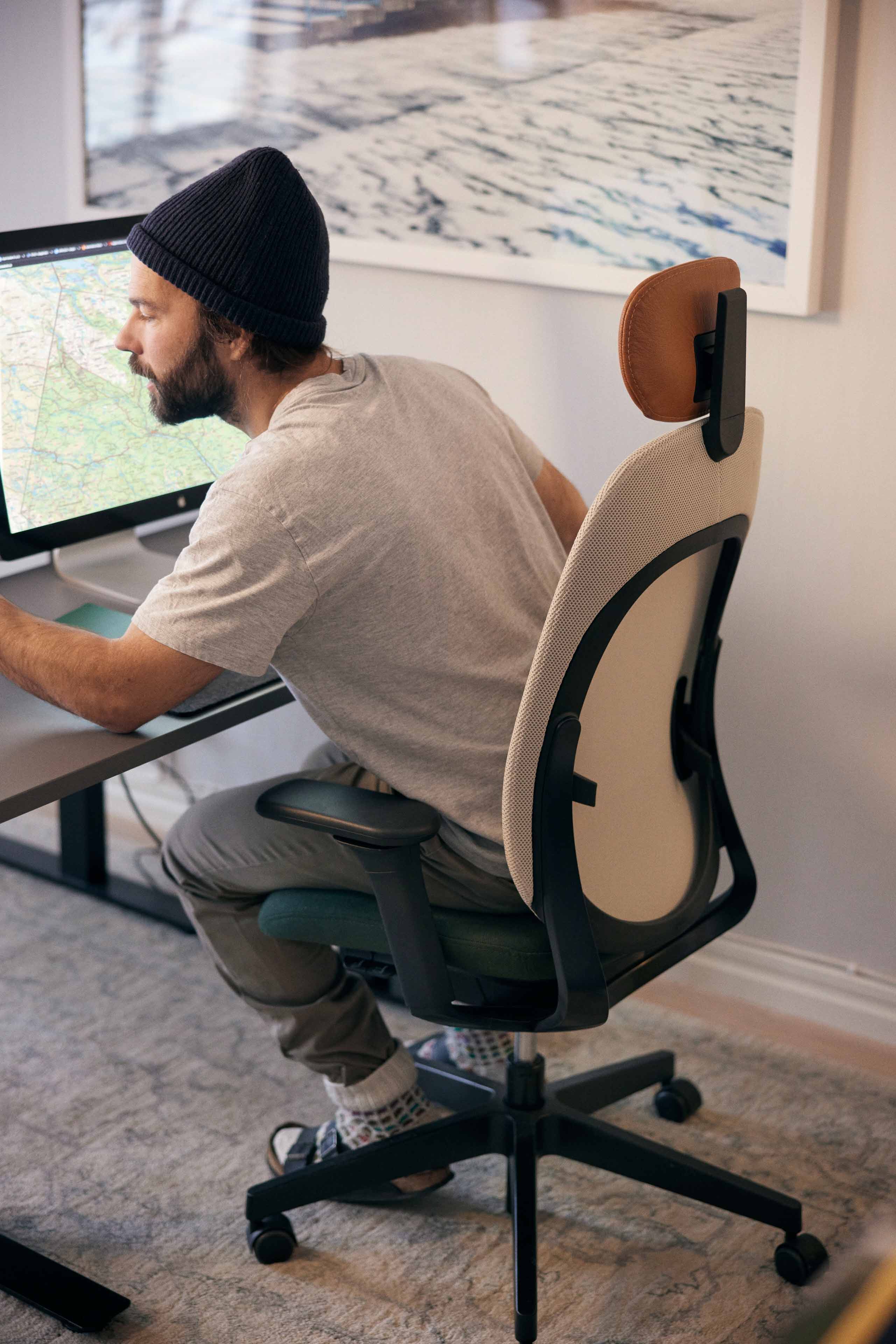
Biophilic design: Bringing nature indoors
Incorporating natural elements into the workspace can significantly boost mental well-being. This includes:
- Plants & greenery to improve air quality and reduce stress.
- Natural light to regulate circadian rhythms and boost energy levels.
- Nature-inspired materials like wood, stone, and natural fabrics.
💡 Fact: Studies show that employees working in offices with plants report 15% higher well-being and productivity.
Acoustic comfort: Managing noise levels
Noise levels in the office significantly impact focus, stress, and overall productivity. Poor acoustics can lead to distractions, frustration, and a decline in work performance. A well-managed acoustic environment fosters concentration, collaboration, and well-being.
Key strategies for improving workplace acoustics include:
- Sound-absorbing materials such as acoustic panels, ceiling baffles, and carpeting to reduce echo and reverberation.
- Zoned workspaces that separate quiet focus areas from collaborative spaces to accommodate different work styles.
- White noise or sound masking systems to create a more balanced ambient sound and minimise disruptions.
💡 Tip: Investing in a well-balanced sound environment enhances employee satisfaction and improves workplace efficiency by reducing auditory distractions.
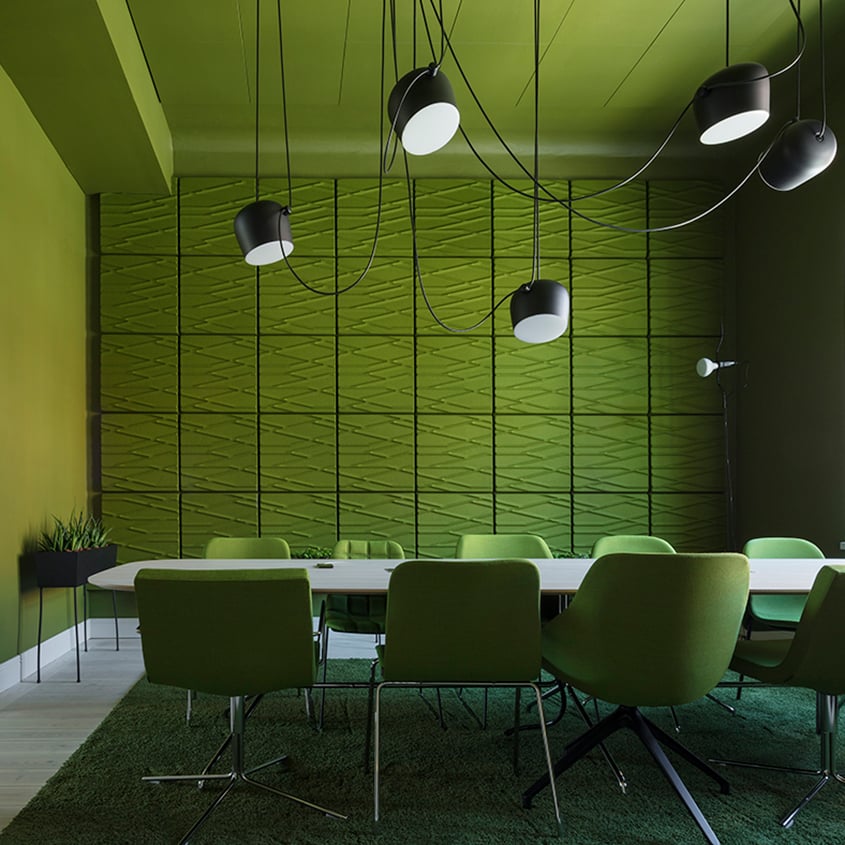

Office Layout: Encouraging Movement & Collaboration
Office layout plays a pivotal role in fostering collaboration, strengthening company culture, and enhancing overall workplace engagement. A well-designed space ensures employees can interact seamlessly while also having access to private, focused work areas.
Key elements of an effective office layout include:
- Flexible workspaces that balance open-plan designs with enclosed focus areas.
- Dedicated collaboration zones to encourage teamwork, brainstorming, and innovation.
- Social spaces such as breakout areas and informal meeting rooms to build stronger interpersonal relationships.
- Pathways and spatial flow that allow for easy movement and spontaneous interactions.
💡 Fact: A thoughtfully planned office layout helps rebuild company culture by creating opportunities for employees to communicate and connect naturally throughout the workday.
Lighting: Enhancing Mood & Productivity
Poor lighting can lead to eye strain, fatigue, and reduced focus. The best workplace lighting includes:
-
Natural daylight exposure to improve mood and energy.
-
Adjustable LED lighting that mimics natural light patterns.
-
Task lighting for focused work areas.
💡 Tip: Position workstations near windows to maximise natural light benefits.
/Flokk-interior-forte-digital-hag-offecct-profim-capisco-carry-on_21.jpg)
Air quality & temperature control
Indoor air quality plays a crucial role in cognitive function and overall health. Key factors include:
- Ventilation systems to improve air circulation.
- HEPA filters & air purifiers to reduce pollutants.
- Temperature control to maintain a comfortable workspace.
- Low-VOC furniture choices to minimize exposure to harmful chemicals and improve indoor air quality.
- Certified low-emission furniture, such as those with GREENGUARD Gold certification, ensures reduced exposure to volatile organic compounds (VOCs), contributing to a safer and healthier workspace.
💡 Fact: Poor air quality can lead to headaches, fatigue, and lower productivity, while selecting furniture that meets environmental health standards helps create a healthier work environment.
Mental well-being & work-life balance
- Quiet & relaxation areas to help employees recharge.
- Flexible work policies (remote work options, hybrid setups).
- Well-being programs such as mindfulness sessions or mental health support.
💡 Tip: Encouraging breaks and social interactions improves job satisfaction and reduces burnout.
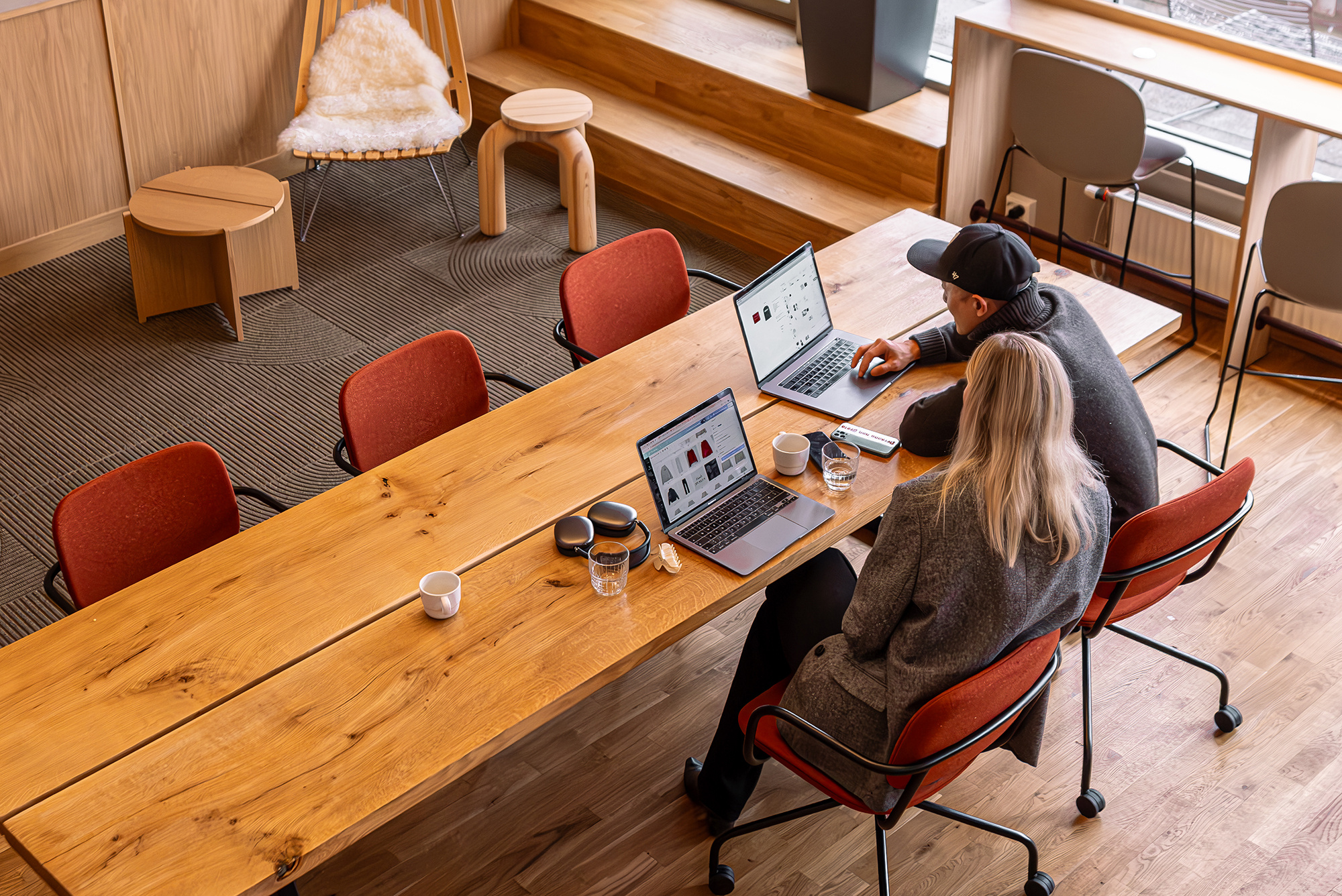
Workplace Well-being Checklist
✅ Ergonomic Seating – Ensure adjustable chairs and desks support posture and movement.
✅ Biophilic Design – Incorporate natural light, plants, and nature-inspired materials.
✅ Acoustic Comfort – Use sound-absorbing materials and create quiet zones.
✅ Office Layout – Design flexible spaces for collaboration and focus.
✅ Lighting – Maximise natural light and use adjustable artificial lighting.
✅ Air Quality – Improve ventilation, use air purifiers, and select low-VOC furniture.
✅ Mental Well-being – Offer relaxation spaces, flexible work policies, and wellness programs.
This might also interest you
Improving ergonomics at work: practical guidance for companies
Ergonomist Rebecka Ullholm shares what most companies get wrong about...
HÅG Tion mesh – now available
Flokk is proud to introduce a new addition to the HÅG Tion family - HÅG...
OFFECCT Circulus wins Red Dot: Best of the Best Design Award 2025
Offecct Circulus, designed by Mario Ferrarini, has been awarded the...